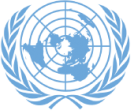ARTA AND THE REBIRTH OF SOMALI INSTITUTIONS
Excellencies, Distinguished Guests, Ladies and Gentlemen:
It is an honour and privilege for me to give this keynote address on the reconciliation process that began in Arta twenty-five years ago that resulted in the reconstitution of governance institutions after the protracted conflict in Somalia. This process which began as President Ismail Omar Guelleh’s initiative has taught us a number of lessons that remain relevant for the deepening of peace in Somalia and beyond.
1. The Importance of Arta
The fratricidal conflict in Somalia had by the late 1990s frustrated the international community as the state had fragmented and warlords held sway. The warlords went on peace tourism actively seeking forum shopping around the world but failed to realise peace.
Then came a new president of Djibouti, President Ismail Omar Guelleh, who strategically used the UN General Assembly to reawaken international focus on Somalia. It was in this regard that the UN Security Council concluded that the Arta process was the most viable basis for peace and national reconciliation for Somalia. Working within the Intergovernmental Authority on Development (IGAD), the Djibouti Republic hosted the long-drawn Arta consultations and dialogue towards reconciliation.
2. Contribution to legitimacy of governance institutions
The Arta peace process was a turning point away from peace tourism in favour of representative and legitimate peacebuilding. After years of top-down rule, military dominance and clan fragmentation, new governance institutions had to be seen as credible, inclusive, representative and legitimate. Several features of the Arta process helped build legitimacy:
a) Broad representation
The Djibouti brethren of Somalis went to a lot of extent to consult traditional/religious authorities, intellectuals, women’s organisations, diaspora stakeholders etc. A number of these consultants stayed on as others joined for broad-based participation allowing the agreement and institutions to claim a wider social mandate.
b) The 4.5 clan-sharing formula
One of the most enduring legacies of Arta was the adoption of the “4.5” power-sharing formula: the four major Somali clan-families shared equally, and minority or “other” clans were allocated a half share. Though not flawless, this formula sought to institutionalise inclusive representation and reduce the dominance of a single clan network — thereby strengthening the legitimacy of the emergent governmental institutions. We are aware that some have lingering concerns about the entrenchment of clan politics that this formula may have inadvertently created and the absence of a built-in exit strategy. We are also confident that Somalis in their wisdom, will successfully reform it and help the country gradually transition to a more inclusive and civic political order.
- c) Gender inclusion
The Arta conference coincided with the adoption of UN Security Council Resolution 1325 (2000) on women, peace and security. In that light, women participants successfully lobbied for guaranteed quota places in the transitional structures (for example 25 seats reserved in the 245-member parliament). While the selection mechanism remained tied to clans (and so not purely merit-based), the fact of women’s inclusion at that critical juncture built a foundation for gender legitimacy — that governance would not be entirely male, warlord-dominated and exclusionary.
d) Venue and process-based legitimacy
Djiboutian host provided as close an environment as possible to hosting within Somalia itself. It was also a neutral ground that ensured distance from conflict and feelings of insecurity. The Arta process also made effective use of media outreach into Somalia and the diaspora, using satellite broadcasts and cultural drama to enable Somalis to feel connected and share views on the process. It was possible for all to accept that the transitional charter that was negotiated and the institutions built on it were not imposed by external actors or warlords. Somali ownership was seen in practice – hence the strong spirit of legitimacy.
3. Major strengths of President Ismail Omar Guelleh’s initiative
Looking more closely at the role of President Ismail Omar Guelleh and the strengths of his initiative in Arta, we can identify several leadership and process lessons worth highlighting:
i) Political Will
President Guelleh with the support of Djiboutians not only provided an environment, and national resources to maintain several people over several months, he showed the political will to see the process through.
ii) Inclusivity in Design
The Guelleh approach by avoiding warlords bargaining among themselves opened a wide vista of consultations. This broadened the base of legitimacy and opened the pathway for institutional reconstruction beyond brute power-sharing.
iii) Innovation in power-sharing formula
The 4.5 formula though imperfect, was a bold innovation. It was weaved around Somali clan order. It was very practical. It avoided one clan dominance. This arrangement continues to be the basis of operation in Somalia to date.
iv) Learning and legacy-orientation
The Arta process created a transitional national assembly, a charter, and a platform for future dialogue. While many challenges and setbacks followed, the footprint of Arta remains visible in Somalia’s governance structures. President Guelleh’s broader regional diplomacy (e.g., subsequent dialogue among Somalis in Kenya with the presence of other countries in the region) shows that the mediation infrastructure built at Arta has ongoing utility. I was fortunate to have been involved in the Arta conference and the subsequent Eldoret and M’bagathi processes, and I can attest to the fact that Arta provided a solid basis for the process.
4. The Challenges
a) Somalia continues to face several daunting challenges. Most strikingly, its federal structure is under strain and terrorism continues to pose a potent threat to peace and security in the country. Furthermore, it is important that the fundamentals embedded at Arta — inclusive representation, power-sharing, civil society, including youth participation and reserved space for women — remain relevant building blocks. Ensuring that new institutions are seen as legitimately representing Somali society (not simply factions with guns) is key to durability.
b) One of the enduring lessons is the importance of having a willing, neutral regional actor with the capacity to convene, host and guide a peace process. Djibouti under Guelleh functioned well in this respect. Other conflict-affected regions can draw on this model: a neighbouring state or regional organisation serving as honest brokers, offering safe space for dialogue, ensuring logistics and backing. This external facilitation must be sensitive to local ownership, avoiding imposition.
c) In many post-conflict settings, inclusion of women and non-military actors is still an aspiration rather than a reality. Arta’s guarantee of women’s seats, and the involvement of youths, signaled that governance reconstruction is not simply the business of warlords. The message is clear: state-building must be inclusive if it is to be legitimate. Current Somali efforts (and others) must keep women and youths not just as tokens, but as meaningful participants in institutional design, oversight, accountability mechanisms, and decision-making.
Concluding remarks
While President Guelleh, as a Somali brother, stepped forward to reawaken the conscience of the international community towards engaging with the solving of the problem in Somalia, today’s reality is different. External actors have interests and interests are by definition difficult to characterize as altruistic. The onus lies on Somalis to chart a pathway forward that would build a successful win-win partnership with countries interested in having meaningful relations with Somalia
Peacebuilding and state building must be seen as work in progress: a process and not an event. Somalia must continue to draw inspiration from the Arta process. The leaders must rise up to the occasion
The road to full legitimacy and effective governance remains an unfinished business. What Arta teaches is that building institutions in a post-conflict setting is incremental, imperfect, but still vital and very necessary.
In conclusion, the Arta Peace Process — under the initiative of President Ismail Omar Guelleh and the generous facilitation of Djibouti — made a seminal contribution to the re-assembly of Somalia’s governance institutions. It advanced legitimacy by widening representation, anchored political architecture in the 4.5 formula, brought women into the process, and set in motion institutional frameworks of transitional governance.
Pragmatically building on Arta and drawing and deepening on some of the lessons above remains very important. Drawing a solid blueprint for peace in Somalia remains crucial if the interests of neighbours and the world at large is to be maintained towards a robust development of Somalia: a viable peace that could allow Somalis in the diaspora to prioritise a return home.
The constant building of peace and the state in Somalia for the realization of development as opposed to selfish individual aggrandizements is a task that must be done. Despite the challenges, sadashu waa guul!
Thank you.


